|
 MODELing with resistivity data
MODELing with resistivity data
This Section contains a case
histories using resistivity methods for editing and
illustrates the differences obtained from various
approaches, as well as the dramatic reduction in noise on
the final synthetic seismograms. Refer to other Sections of
this Chapter for the mathematical details.
 Case History - Fisher Good Editing
Case History - Fisher Good Editing
This example shows the effect of the Fisher-Good method on noisy
sonic and density data. The illustrations show:
1. original and edited sonic
2. original and edited density
3. synthetic from original sonic and density
4. synthetic from edited sonic and density
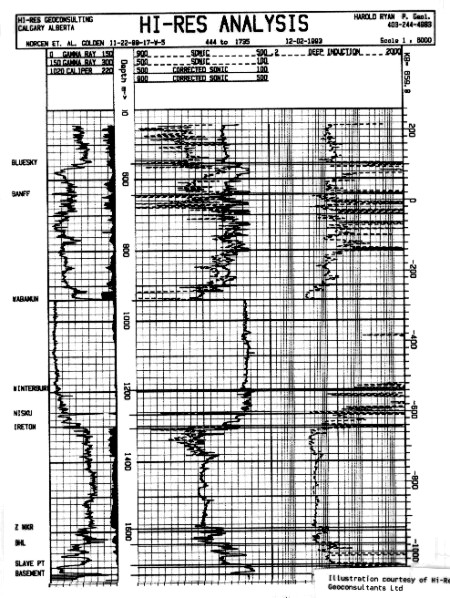
Original and edited sonic log
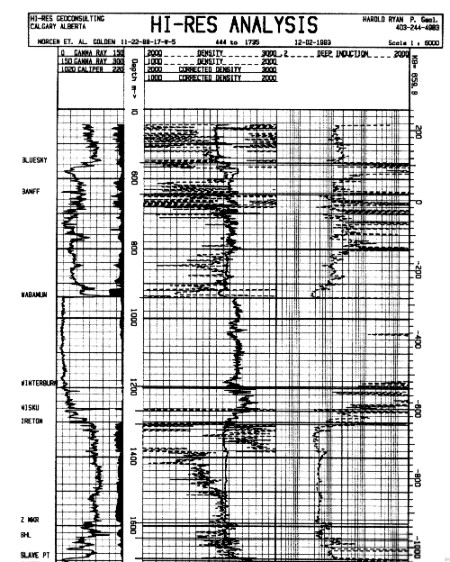
Original and edited density log
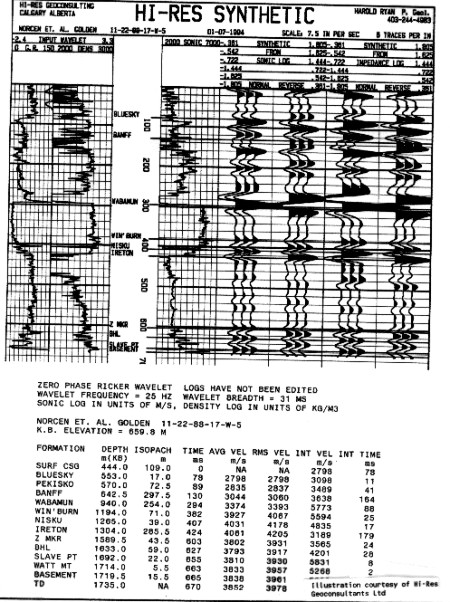
Synthetic from original logs
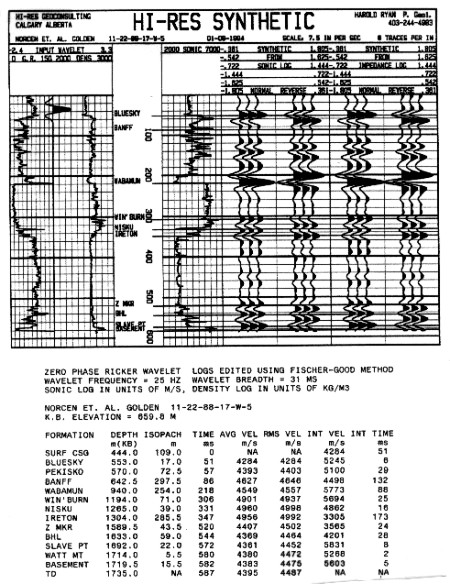
Synthetic from edited logs
The
close match of the edited logs to the original (where no editing
was required) demonstrate the calibration of parameters. Rational
logs are generated where bad hole effects seriously degrade both
original sonic and density. The synthetic seismogram has no spurious
reflections and horizon time picks are reliable.
The
method is described in more detail in "An economic approach
to sonic error corrections: The EASElog process"; Fischer,
J.G., Good, W.F.; p. ??, SEG 1985. This example was prepared by
Harold Ryan using the seismic modeling module of the author's
LOG/MATE software package.
 Case History - Faust and Smith Editing
Case History - Faust and Smith Editing
These examples show the results of using Wyllie time average (response
equation), Faust, and Smith editing techniques to four US cases.
The log plots show:
1. gamma ray log
2. resistivity log
3. computed lithology
4. original sonic and Wyllie edited sonic
5. original sonic and Faust edited sonic
6. original sonic and Smith edited sonic
7. error between original sonic and Wyllie edited sonic
8. error between original sonic and Faust edited sonic
9. error between original sonic and Smith edited sonic
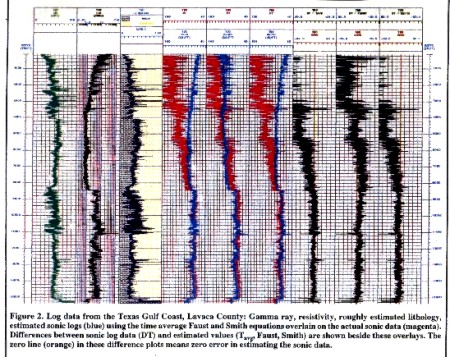
Faust, Smith, and Wyllie editing - onshore Gulf
Coast, Texas
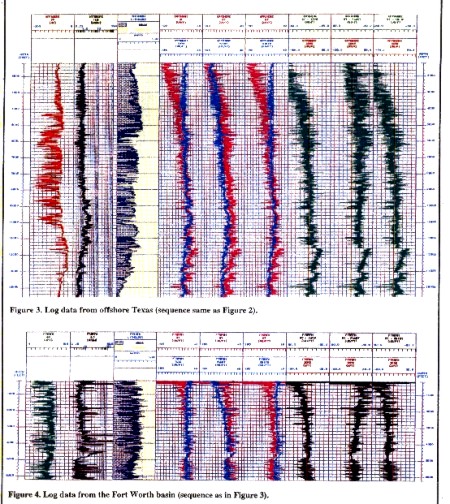
Faust, Smith, and Wyllie editing - offshore
Gulf Coast, Texas (upper) and Fort Worth Basin, Texas (lower)
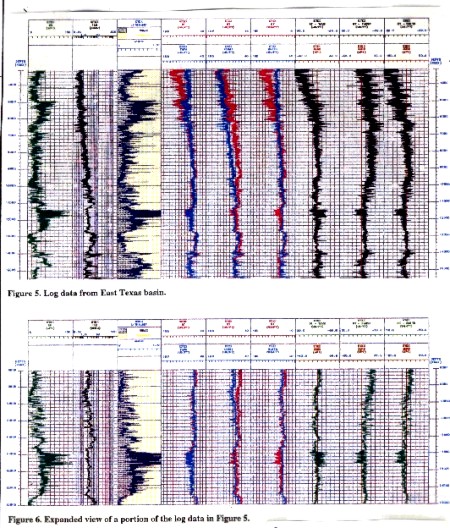
Faust, Smith, and Wyllie editing - East Texas
It
is clear that reasonable sonic, and also density if needed, can
be generated by these techniques. The error traces help identify
the places to concentrate effort. Places where the error is
small identify reasonable good original log data and where
parameters can be refined by successive iterations. These
illustrations are from "In search of the well tie: what if I
don't have a sonic log?"; Adcock,S.; SEG Leading Edge, p.
1161-1164, Dec 1993.
|

